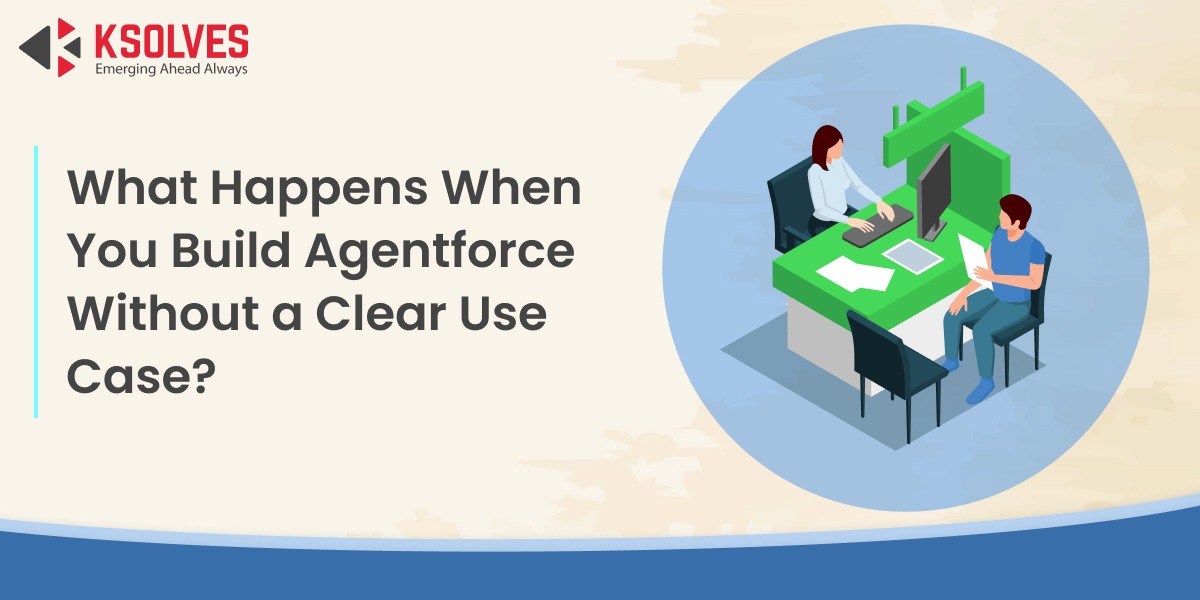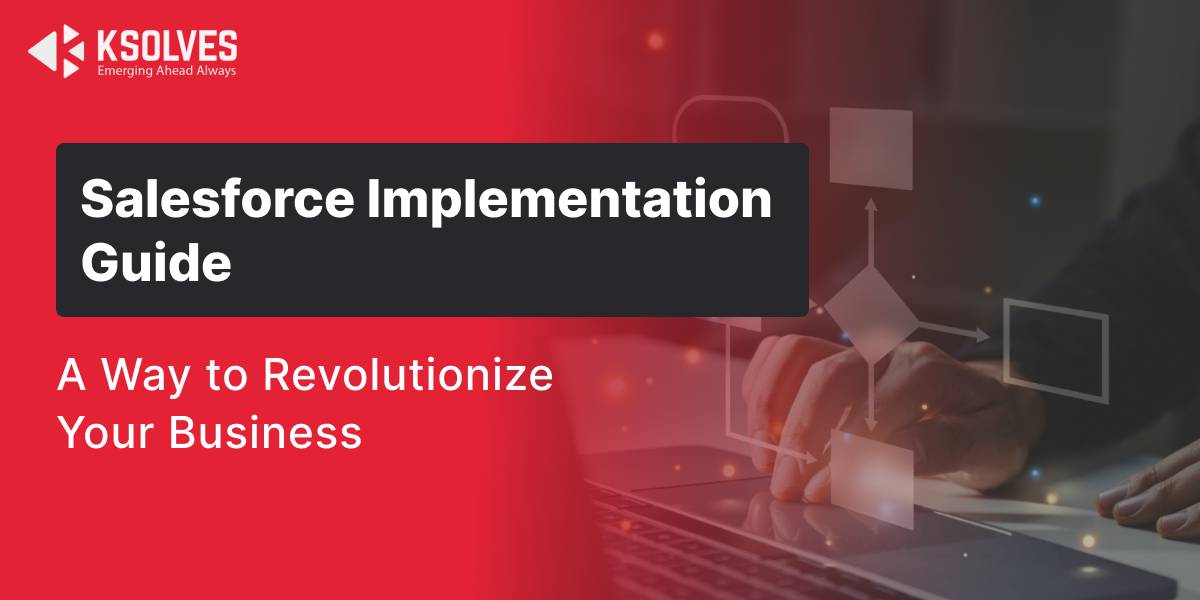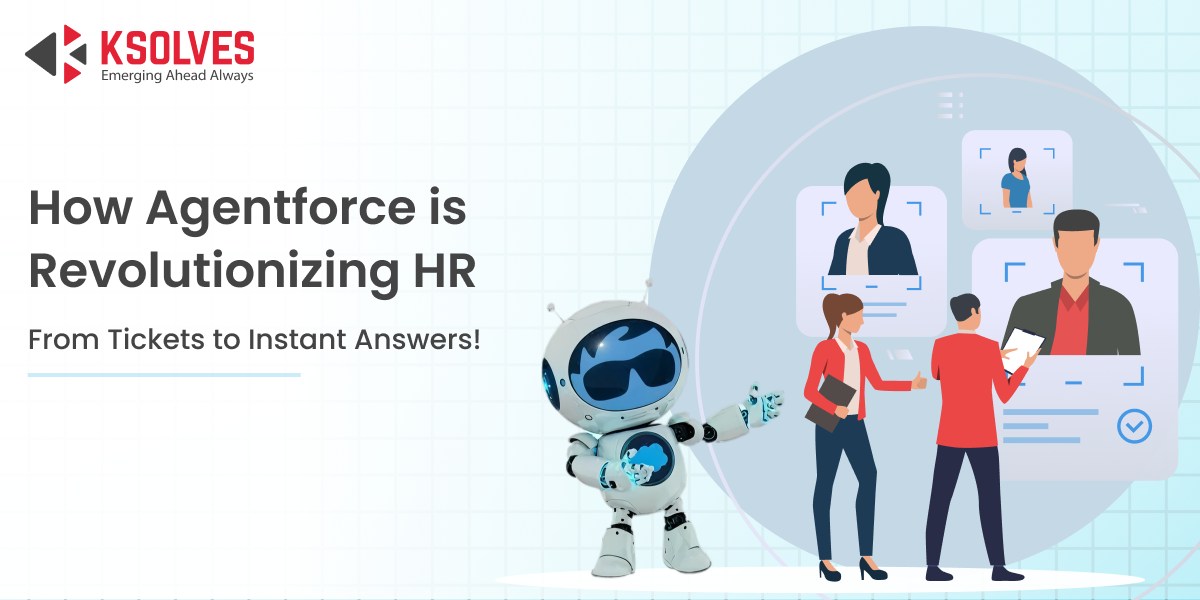What Happens When You Build Agentforce Without a Clear Use Case?
Agentforce
5 MIN READ
June 23, 2025
![]()

As businesses race to adopt generative AI, tools like Salesforce’s Agentforce are generating buzz. Salesforce describes Agentforce as a platform of autonomous AI agents that boost scale, efficiency, and satisfaction across sales, service, marketing, commerce, and more.
However, experts caution that launching AI projects without a strategic plan is risky. Companies investing in AI to automate processes “often lead to wasted resources and limited impact” if the AI isn’t aligned with business goals. In short, diving into Agentforce without a clear use case can dilute focus and drive up costs.
Understanding Agentforce
Agentforce is Salesforce’s enterprise AI agent platform that lets organizations build and deploy custom “digital assistants” for any workflow. These agents can analyze data, make decisions, and take action on tasks such as answering customer service questions, qualifying sales leads, or optimizing campaigns. The idea is to embed AI into existing Salesforce apps and data, so companies can scale support and sales operations. For example, Salesforce cites customers like OpenTable and Saks using Agentforce because it integrates with their apps and augments employees while scaling business capacity. Agentforce uses low-code tools so admins and developers can create autonomous bots across departments (sales, service, marketing, etc.) without writing complex code.
Despite this promise, many organizations are still experimenting. In fact, Salesforce executives themselves describe Agentforce adoption as “a hard sell” so far. Users report that simple demo agents (e.g., “book a table” or “return a dress”) work quickly, but building useful enterprise scenarios takes time and clear planning. Without understanding how Agentforce fits into a process, companies risk deploying agents that don’t actually help. This makes it essential to consider possible pitfalls.
Risks of Implementing Agentforce Without a Clear Use Case
Agentforce implementation without a well-defined use case can lead to wasted resources and missed opportunities. Without a clear strategy, even the most powerful AI agents risk becoming underutilized tools rather than impactful solutions.
Misaligned Objectives
Without a defined goal, Agentforce projects can drift. Without clear goals, AI projects can become unfocused and fail to deliver value because teams lack direction. For example, a company might aim to improve “customer experience,” but if it doesn’t specify whether that means faster responses or personalized service, the AI effort becomes scattered.
In practice, this ambiguity leads to contradictory agent actions or chasing the wrong metrics. Clear objectives, like reducing ticket resolution time by 30%, are needed; otherwise, Agentforce agents may automate tasks that don’t actually move the needle.
This lack of clarity is a common issue, with studies indicating that up to 80% of AI projects fail due to misaligned goals and vague objectives.
Resource Wastage
Building AI tools takes time and money. Adding AI features “just to sound trendy” drives up development costs and delays launches. If there’s no concrete use case, teams may spend months on prompts, training, or integration that yield little benefit. Implementing AI without aligning to strategy often leads to wasted resources.
In short, without a clear ROI, Agentforce work becomes an expensive experiment rather than a value-driving project.
This scenario is not uncommon. Reports suggest that many AI initiatives fail to deliver significant value, with only 25% of executives seeing substantial benefits from their AI investments.
User Frustration
AI features that don’t address real needs can frustrate both customers and employees. For instance, deploying an AI agent on a poorly structured website often results in a confusing user experience and dissatisfied users. In practice, agents built without considering user needs tend to provide inaccurate or irrelevant responses.
For example, an AI sales assistant that misinterprets queries can frustrate sales representatives who must then intervene to correct errors. Similarly, customer service agents may become annoyed if an AI bot consistently provides incorrect suggestions. In short, an AI implemented without a clear purpose can erode trust and engagement.
Integration Challenges
Integrating Agentforce into existing systems can be complex, especially for organizations with legacy CRM setups and siloed data. Many companies rely on outdated architectures, making it difficult for new AI agent platforms to function effectively. Incompatible data formats or outdated databases can hinder the agent’s access to necessary information. Organizations with technical debt and legacy issues often face challenges in getting Agentforce to work properly, as data requires thorough cleaning before AI can utilize it effectively.
Without careful preparation, agents may produce subpar outputs or fail to function altogether. Each integration step—connecting to platforms like Slack, Email, ERP systems, etc.—adds complexity. Starting without a clear plan can lead to significant delays and costly workarounds.
Suboptimal Performance
AI models depend on good inputs and clear objectives. Deploying Agentforce without a focused use case often results in poor performance. When business processes are undefined, the data fed to the agent can be noisy or irrelevant, leading to low accuracy and mistakes.
For example, an agent might hallucinate or choose ineffective actions when its task is vague. In effect, an agent that lacks context or training against a specific goal simply won’t live up to expectations, undermining confidence in the technology.
Low Adoption Rates
Ultimately, if Agentforce doesn’t demonstrate clear, tangible value, both users and decision-makers are likely to hesitate. Despite significant marketing efforts, adoption has lagged because many organizations struggle to define practical, business-relevant use cases.
Without a clear purpose, AI agents often seem like an unnecessary investment, both in time and cost. This leads to stalled pilot programs, underutilized licenses, and growing skepticism. Employees are unlikely to adopt a tool if they can’t immediately see how it supports or enhances their day-to-day work.
The Importance of Defining a Clear Use Case
Here are the key Agentforce features and benefits that come from starting with a clear use case:
- A well-defined use case is the foundation for any successful AI implementation.
- Clearly defined use cases help align AI technology with specific business needs.
- Start by identifying a concrete problem before beginning any agent development (e.g., “automate contract approvals” or “summarize support tickets”).
- Companies that define their use cases upfront report better project outcomes and higher ROI.
- Vague goals like “improve customer experience” without specifics often lead to ineffective AI solutions.
- A clear use case helps teams stay focused on measurable objectives and ensures that Agentforce solves real business challenges.
Steps to Identify and Develop a Use Case for Agentforce
To get real value from Agentforce, implementation must begin with a clear, targeted use case. The following steps will help you identify the right opportunity and build a solution that delivers measurable impact.
- Conduct a Needs Assessment
Begin by identifying key challenges and inefficiencies across your business processes. Focus on areas where AI can deliver measurable value, especially tasks involving large data volumes or repetitive work. Prioritize problems that require decision-making speed or intelligent automation, such as handling high volumes of FAQs or routing leads efficiently. Document these pain points and assess whether Agentforce’s capabilities, like data analysis or workflow automation, can significantly improve outcomes. - Engage Stakeholders Early
Bring together both business and technical stakeholders from the beginning. Include perspectives from sales, service, operations, and IT to ensure the use case reflects real operational needs. This cross-functional collaboration helps define shared goals and ensures the solution is both practical and technically viable. For example, sales leaders may prioritize faster lead follow-up, while IT ensures smooth integration with existing systems. - Define Clear Objectives and KPIs
Once a use case is selected, establish specific goals and success metrics. Define what outcomes you want to achieve, such as reducing support ticket volume by 40% or cutting manual data entry time in half. Choose KPIs that align with your goals, such as efficiency gains, cost savings, accuracy improvements, or employee satisfaction. These metrics provide a clear way to measure the impact of Agentforce and ensure the project remains focused and results-driven.
Conclusion
Agentforce has the potential to transform business operations—but only when it’s implemented with purpose. Without a clear use case, even the most advanced AI agent can become a drain on time, resources, and trust. Misaligned goals, frustrated users, and integration hurdles are common outcomes when strategy takes a back seat.
The path to success starts with defining a real business challenge, aligning stakeholders, and establishing measurable KPIs.
At Ksolves, we specialize in helping organizations unlock the full potential of Agentforce. From identifying high-impact use cases to designing and deploying AI agents that integrate seamlessly with your Salesforce ecosystem, our Agentforce consulting services are built to deliver tangible results.
![]()







Author
Share with